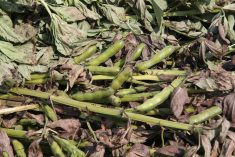Lentil acres 500,000 over forecast | Demand from India may help
Pulse market analysts are worried about the number of acres of lentils that growers intend to plant.
“It’s certainly more than what’s needed, no doubt about it,” said Chuck Penner of LeftField Commodity Research.
Farmers told Statistics Canada they plan to seed 2.46 million acres.
Stat Publishing editor Brian Clancey said markets were expecting closer to two million acres.
Clancey is forecasting that Statistics Canada’s March 31 stocks report, to be released May 7, will show 950,000 tonnes of lentils, which is three times more than what will be needed to cover normal demand through the end of July. That means another sizeable carryout.
Read Also

Biofuel sector happy with federal budget
Advanced Biofuels Canada says new Biofuel Production Incentive is a lifeline until CFR amendments are in place.
“Normally that would put a lot of pressure on prices, but there is no pressure on farmers in Western Canada to sell lentils or other crops to generate cash,” he wrote in an article that ran in the May edition of Saskatchewan Pulse Growers’ Pulse Market Report.
The good news is there could be strong demand for lentils from India in the coming months.
The rabi or winter harvest is about two-thirds complete and lentil production is expected to be 750,000 tonnes, which is 16 percent smaller than last year’s crop, according to The Hindu Business Line associate editor G. Chandrashekhar, in an article he wrote for the Pulse Market Report.
Indian imports are also down in 2011-12, leading to a 23 percent decline in overall supply when added to the disappointing production number.
“That’s where we see some signs that Canadian red lentil exports are going to be a little firmer,” said Penner.
Green lentil exports are fairly static from year to year unless India has a bad pigeon pea crop, but that won’t be known until the end of summer.
India’s government is forecasting 7.4 million tonnes of rabi chickpea production, but Chandrashekhar said most in the trade think it will be closer to 6.8 million tonnes. Total supply of 7.3 million tonnes would be seven percent below last year’s levels.
“That will be helpful for anybody who is exporting peas,” said Penner.
Growers told Statistics Canada they intend to plant 3.3 million acres of peas, which is up one million acres from last year and above market expectations.
“It was a little bit higher than what I was expecting, but it’s not going to make things burdensome by any stretch and probably not even comfortable,” said Penner.
He anticipates continued strong pea demand from China and India in 2012-13.
Farmers plan to grow 265,000 acres of chickpeas, which is more than double last year’s crop of 126,000 acres. Penner was expecting even more because of good prices.
He also anticipated more beans. Growers intend to plant 285,000 acres, up from 170,000 acres last year.
The market clearly doesn’t think that is enough because bean prices in places like Mexico, Brazil and Argentina are up sharply.
“They’ve been just taking off like crazy, so I think they’re seeing that dry bean acres are not going to be enough in Canada and the U.S.,” said Penner.
Farmers in the United States intend to plant 39 percent more beans. However, that will only bring North American plantings back to the average of around two million acres because growers in Canada and the U.S. are simply replacing the acres they lost to flooding last year.
















